|
Search, browse, and study this dictionary to learn more about the early American, Christian language. 
 1828.mshaffer.com › Word [bee]
1828.mshaffer.com › Word [bee]
BEE, n. An insect of the genus Apis. [See Apis.] The species are numerous, of which the honey-bee is the most interesting to man. It has been cultivated from the earliest periods, for its wax and honey. It lives in swarms or societies, of from 10,000 to 50,000 individuals. These swarms contain three classes of bees, the females or queen bees, the males or drones, and the neuters or working bees. Of the former, there is only one in each hive or swarm, whose sole office is to propagate the species. It is much larger than the other bees. The drones serve merely for impregnating the queen, after which they are destroyed by the neuters. These last are the laborers of the hive. They collect the honey, form the cells, and feed the other bees and the young. They are furnished with a proboscis by which they suck the honey from flowers, and a mouth by which they swallow it, and then convey it to the hive in their stomachs, where they disgorge it into the cells. The pollen of flowers settles on the hairs with which their body is covered, whence it is collected into pellets, by a brush on their second pair of legs,and deposited in a hollow in the third pair. It is called bee bread, and is the food of the larvae or young. The adult bees feed on honey. The wax was supposed to be formed from pollen by a digestive process, but it is now ascertained that it is formed from the honey by a similar process. The females and neuters have a barbed sting, attached to a bag of poison, which flows into the wound inflicted by the sting. When a hive is overstocked, a new colony is sent out under the direction of a queen bee. This is called swarming.
|
Evolution (or devolution) of this word [bee]
| 1828 Webster | 1844 Webster | 1913 Webster |
|---|
BEE, n. An insect of the genus Apis. [See Apis.] The species are numerous, of which the honey-bee is the most interesting to man. It has been cultivated from the earliest periods, for its wax and honey. It lives in swarms or societies, of from 10,000 to 50,000 individuals. These swarms contain three classes of bees, the females or queen bees, the males or drones, and the neuters or working bees. Of the former, there is only one in each hive or swarm, whose sole office is to propagate the species. It is much larger than the other bees. The drones serve merely for impregnating the queen, after which they are destroyed by the neuters. These last are the laborers of the hive. They collect the honey, form the cells, and feed the other bees and the young. They are furnished with a proboscis by which they suck the honey from flowers, and a mouth by which they swallow it, and then convey it to the hive in their stomachs, where they disgorge it into the cells. The pollen of flowers settles on the hairs with which their body is covered, whence it is collected into pellets, by a brush on their second pair of legs,and deposited in a hollow in the third pair. It is called bee bread, and is the food of the larvae or young. The adult bees feed on honey. The wax was supposed to be formed from pollen by a digestive process, but it is now ascertained that it is formed from the honey by a similar process. The females and neuters have a barbed sting, attached to a bag of poison, which flows into the wound inflicted by the sting. When a hive is overstocked, a new colony is sent out under the direction of a queen bee. This is called swarming. |
BEE, n. [Sax. beo; D. bye; Ger. biene; Sw. bij; Dan. bie; Ir. beach; It. pecchia; Sp. abeja. Class Bg.]- An insect of the genus Apis. (See Apis.) The species are numerous, of which the honey-bee is the most interesting to man. It has been cultivated from the earliest periods, for its wax and honey. It lives in swarms or societies, of from 10,000 to 50,000 individuals. These swarms contain three classes of bees, the females or queen bees, the males or drones, and the neuters or working bees. Of the former, there is only one in each hive or swarm, whose sole office is to propagate the species. It is much larger than the other bees. The drones serve merely for impregnating the queen, after which they are destroyed by the neuters. These last are the laborers of the hive. They collect the honey, form the cells, and feed the other bees and the young. They are furnished with a proboscis by which they suck the honey from flowers, and a mouth by which they swallow it, and then convey it to the hive in their stomachs, where they disgorge it into the cells. The pollen of flowers settles on the hairs with which their body is covered, whence it is collected into pellets, by a brush on their second pair of legs, and deposited in a hollow in the third pair. It is called bee bread, and is the food of the larvæ or young. The adult bees feed on honey. The wax was supposed to be formed from pollen by a digestive process, but it is now ascertained that it is formed from the honey by a similar process. The females and neuters have a barbed sting, attached to a bag of poison, which flows into the wound inflicted by the sting. When a hive is overstocked, a new colony is sent out under the direction of a queen bee. This is called swarming. – Cyc. Ed. Encyc.
- In America, joint, voluntary and gratuitous aid afforded by neighbors to their minister, or to any person in need.
|
Bee
- p. p. of Be; -- used
for been.
- An insect of the order Hymenoptera, and
family Apidæ (the honeybees), or family Andrenidæ
(the solitary bees.) See Honeybee.
- A neighborly gathering of people who engage in
united labor for the benefit of an individual or family; as, a quilting
bee; a husking bee; a raising bee.
- Pieces
of hard wood bolted to the sides of the bowsprit, to reeve the fore-topmast
stays through; -- called also bee blocks.
|
| 1828 Webster | 1844 Webster | 1913 Webster |
|---|
Thank you for visiting!
- Our goal is to try and improve the quality of the digital form of this dictionary being historically true and accurate to the first American dictionary. Read more ...
- Below you will find three sketches from a talented artist and friend depicting Noah Webster at work. Please tell us what you think.
Divine Study
 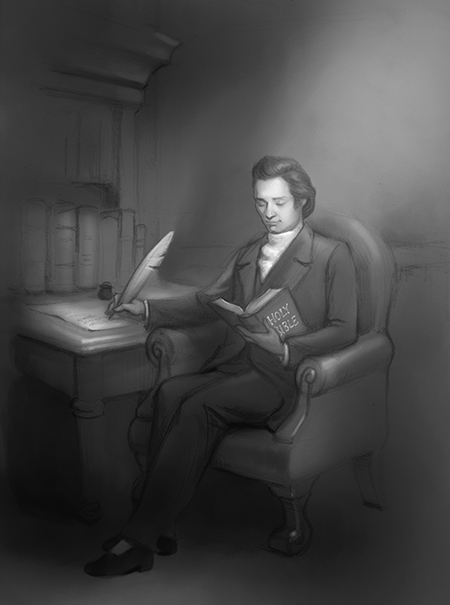
Divine Study
|
Window of Reflection
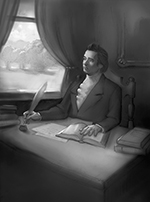 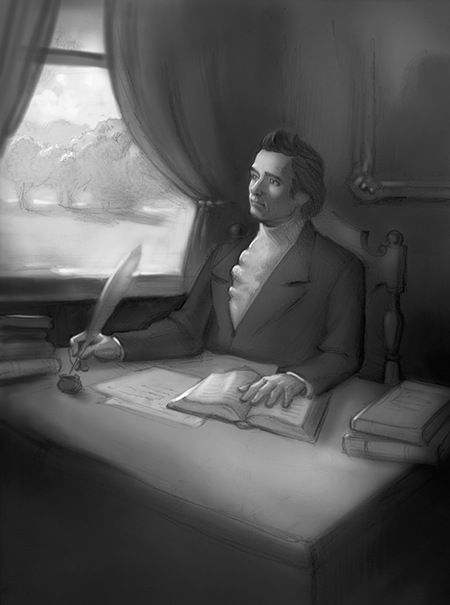
Window of Reflection
|
Enlightening Grace
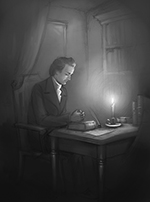 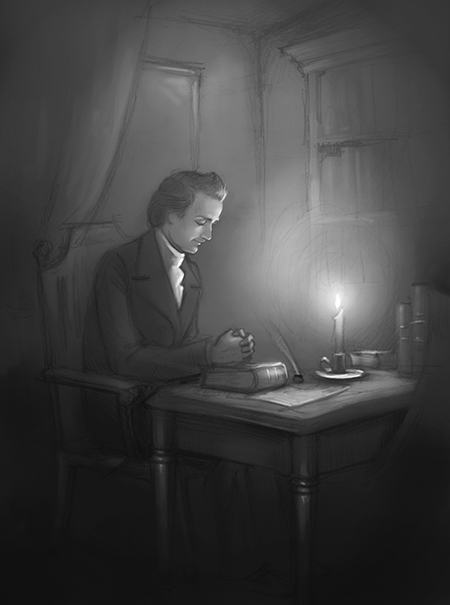
Enlightening Grace
|
160
|
937 |
113
|
1020 |
186
|
1053 |

Bee BEE, noun An insect of the genus Apis. [See Apis.] The species are numerous, of which the honey-bee is the most interesting to man. It has been cultivated from the earliest periods, for its wax and honey. It lives in swarms or societies, of from 10, 000 to 50, 000 individuals. These swarms contain three classes of bees, the females or queen bees, the males or drones, and the neuters or working bees. Of the former, there is only one in each hive or swarm, whose sole office is to propagate the species. It is much larger than the other bees. The drones serve merely for impregnating the queen, after which they are destroyed by the neuters. These last are the laborers of the hive. They collect the honey, form the cells, and feed the other bees and the young. They are furnished with a proboscis by which they suck the honey from flowers, and a mouth by which they swallow it, and then convey it to the hive in their stomachs, where they disgorge it into the cells. The pollen of flowers settles on the hairs with which their body is covered, whence it is collected into pellets, by a brush on their second pair of legs, and deposited in a hollow in the third pair. It is called bee bread, and is the food of the larvae or young. The adult bees feed on honey. The wax was supposed to be formed from pollen by a digestive process, but it is now ascertained that it is formed from the honey by a similar process. The females and neuters have a barbed sting, attached to a bag of poison, which flows into the wound inflicted by the sting. When a hive is overstocked, a new colony is sent out under the direction of a queen bee This is called swarming. |

|
| Hard-cover Edition |
368 |
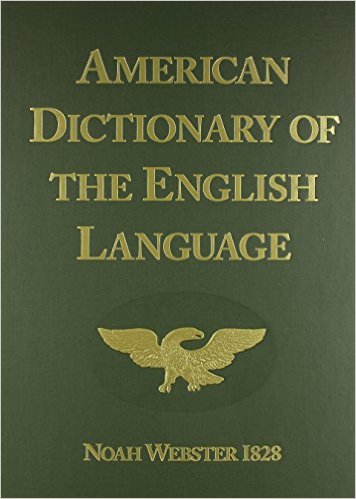 |
543 |
|
| Compact Edition |
353 |
 |
242 |
|
| CD-ROM |
303 |
 |
192 |
|
* As a note, I have purchased each of these products. In fact, as we have been developing the Project:: 1828 Reprint, I have purchased several of the bulky hard-cover dictionaries. My opinion is that the 2000-page hard-cover edition is the only good viable solution at this time. The compact edition was a bit disappointing and the CD-ROM as well. |
| [ + ] |
| Add Search To Your Site |
|
|
|
 1828.mshaffer.com › Word [bee]
1828.mshaffer.com › Word [bee]
